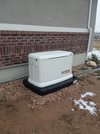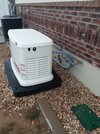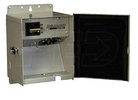Curious if it would ever be a cost benefit to run the generator instead of using the electricity brought in by the city? Or is soley power outage use only?
It really depends on where you are at. There are a few ways to make this work but to my knowledge there is not a lot of opportunity in Utah where it would pay for itself. For the most part generators are purchased because you want power when the utility is out and either want the luxury of the power, or have a high cost of power being down (not being able to work or produce, life support devices not working, spoilage, etc). With an aging grid across the country stressed under adverse weather conditions and liability issues from utilities there has been a dramatic increase in the demand for generators around the nation. That being said RMP is really pretty reliable and does a good job of distribution outside of weather events that are typically beyond their control. There are really three primary ways to get a payback on a generator outside of risk mitigation or power outage cost offsets that I am aware of, production arbitrage, peak shaving, and demand generation.
Production arbitrage: Most generator owners are not really able to effectively arbitrage in power generation as there isn't typically a high spark spread (the cost of producing with a natural gas unit vs utility cost fully factoring fuel cost, maintenance cost, and capital expense and financing costs). It is rare that this can offset the cost of the utilities cost if power is readily available. Additionally, as
@Mouse mentioned these units are not designed to run as a prime power unit. Even most water cooled units are not typically prime rated. As you get into the industrial side there are certainly more options. They typically make the most sense when utility power is not readily available and the cost to install it is significant. It might also be a factor if you have a job site that moves frequently and would be best served by a mobile or skid mounted genset rather than moving the utility. Emissions becomes a significantly larger issue when you get into prime power and may be regulated by the local Authority Having Jurisdiction (AHJ).
Peak shaving: There are some power rate plans that give demand charges. That is you pay a higher rate based on your highest 15 minute use during the month for the whole month. I'm not aware of many residences that would be on this type of a rate plan. The goal of peak shaving is to offset that highest 15 minute window. It is similar to production arbitrage in that the cost of the production (spark spread) still needs to be less but more often has a payback if you have demand charges and only have a few loads that cycling in frequently throughout the day or month. The idea is that you would use the generator to run the load during those peak times so you only pay your base rate for the month.
Demand Generation: There are some utilities and coop providers that offer a program that if you have a generator installed, then they will pay you to be able to turn it on and produce power to help distribute generation to offset their peak demand production shortages. This can help offset the cost of a generator, but I don't believe this is a program widely available in Utah.
TL/DR: Probably not in Utah for a residential generator as our cost of power is really pretty low.



